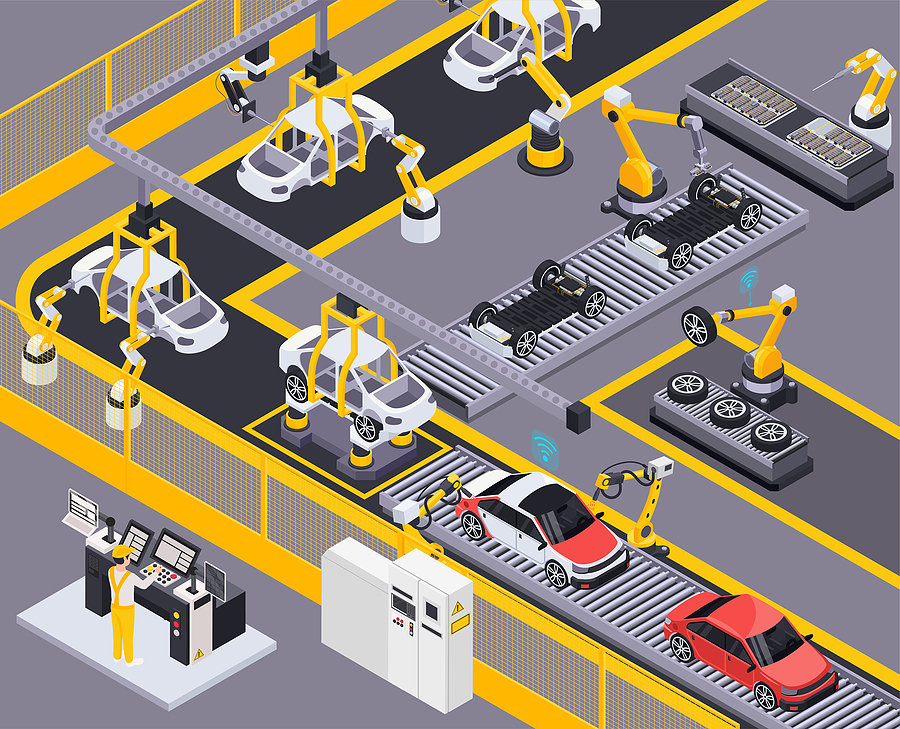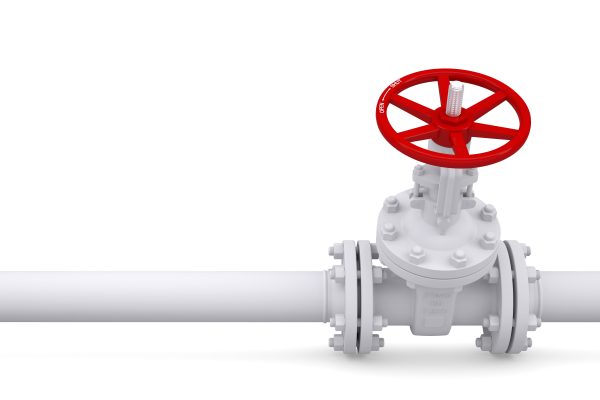-
Subscribe to Blog:
SEARCH THE BLOG
CATEGORIES
- Aerospace
- Asset Maintenance
- Automotive
- Blog
- Building Products
- Case Studies
- Chemical Processing
- Consulting
- Food & Beverage
- Forestry Products
- Hospitals & Healthcare
- Knowledge Transfer
- Lean Manufacturing
- Life Sciences
- Logistics
- Manufacturing
- Material Utilization
- Metals
- Mining
- News
- Office Politics
- Oil & Gas
- Plastics
- Private Equity
- Process Improvement
- Project Management
- Spend Management
- Supply Chain
- Uncategorized
- Utilities
- Whitepapers
BLOG ARCHIVES
- July 2025 (1)
- June 2025 (4)
- May 2025 (1)
- April 2025 (1)
- March 2025 (1)
- February 2025 (4)
- January 2025 (4)
- December 2024 (4)
- November 2024 (2)
- October 2024 (6)
- September 2024 (5)
- August 2024 (5)
- July 2024 (6)
- June 2024 (3)
- May 2024 (3)
- April 2024 (4)
- March 2024 (3)
- February 2024 (4)
- January 2024 (5)
- December 2023 (2)
- November 2023 (1)
- October 2023 (6)
- September 2023 (3)
- August 2023 (4)
- July 2023 (2)
- June 2023 (3)
- May 2023 (7)
- April 2023 (3)
- March 2023 (3)
- February 2023 (5)
- January 2023 (6)
- December 2022 (2)
- November 2022 (5)
- October 2022 (5)
- September 2022 (5)
- August 2022 (6)
- July 2022 (3)
- June 2022 (4)
- May 2022 (5)
- April 2022 (3)
- March 2022 (5)
- February 2022 (4)
- January 2022 (7)
- December 2021 (3)
- November 2021 (5)
- October 2021 (3)
- September 2021 (2)
- August 2021 (6)
- July 2021 (2)
- June 2021 (10)
- May 2021 (4)
- April 2021 (5)
- March 2021 (5)
- February 2021 (3)
- January 2021 (4)
- December 2020 (3)
- November 2020 (3)
- October 2020 (3)
- September 2020 (3)
- August 2020 (4)
- July 2020 (3)
- June 2020 (5)
- May 2020 (3)
- April 2020 (3)
- March 2020 (4)
- February 2020 (4)
- January 2020 (4)
- December 2019 (3)
- November 2019 (2)
- October 2019 (4)
- September 2019 (2)
- August 2019 (4)
- July 2019 (3)
- June 2019 (4)
- May 2019 (2)
- April 2019 (4)
- March 2019 (4)
- February 2019 (5)
- January 2019 (5)
- December 2018 (2)
- November 2018 (2)
- October 2018 (5)
- September 2018 (4)
- August 2018 (3)
- July 2018 (2)
- June 2018 (4)
- May 2018 (3)
- April 2018 (3)
- March 2018 (2)
- February 2018 (2)
- January 2018 (1)
- December 2017 (1)
- November 2017 (2)
- October 2017 (2)
- September 2017 (1)
- August 2017 (2)
- July 2017 (2)
- June 2017 (1)
- April 2017 (3)
- March 2017 (3)
- February 2017 (2)
- January 2017 (2)
- December 2016 (2)
- November 2016 (4)
- October 2016 (4)
- September 2016 (3)
- August 2016 (6)
- July 2016 (4)
- June 2016 (4)
- May 2016 (1)
- April 2016 (3)
- March 2016 (4)
- February 2016 (2)
- January 2016 (4)
- December 2015 (3)
- November 2015 (3)
- October 2015 (1)
- September 2015 (1)
- August 2015 (4)
- July 2015 (6)
- June 2015 (4)
- May 2015 (7)
- April 2015 (6)
- March 2015 (6)
- February 2015 (4)
- January 2015 (3)
CONNECT WITH US
Tag Archives: Predictive Maintenance
Smart factories are redefining how supply chains operate, making production lines faster, more accurate, and better connected than ever. At the heart of this transformation is the integration of advanced technologies that allow systems to communicate in real time. This connection between machines, software, and data is key to improving decision-making, reducing waste, and boosting operational efficiency.
Core Technologies Powering Smart Factories
Several technologies work together to bring smart factory environments to life. Industrial Internet of Things devices collect data across every part of a facility, from machine performance to product quality. This data is then sent to centralized platforms powered by artificial intelligence and machine learning, which analyze it and trigger automated responses. These insights help supervisors predict maintenance needs, monitor production bottlenecks, and allocate resources more efficiently.
Meanwhile, robotics and automation streamline repetitive tasks. Machines that once operated in isolation now sync with surrounding equipment, creating smooth transitions between steps in production. This reduces downtime and manual errors. Cloud-based platforms allow managers to access performance data from any location, supporting more agile responses across the entire supply chain.
The Importance of System Compatibility
Integrating these technologies successfully depends on strong infrastructure and compatible systems. Manufacturers must ensure that legacy equipment can communicate with newer software platforms or be updated without major disruption. Choosing hardware that supports open protocols allows easier integration across departments and vendors.
Reliable connections are also essential. Sensors, programmable controllers, and real-time data platforms must work in coordination without lags or breakdowns. This is where cable assembly manufacturers play a subtle yet critical role. High-quality cables and connectors provide the physical support necessary for transmitting data quickly and accurately throughout a smart factory.
Transforming Supply Chain Agility
As smart factories mature, their benefits ripple throughout the supply chain. Real-time visibility allows businesses to respond faster to supply shortages or changes in demand. Integrated technologies help eliminate silos across logistics, procurement, and production planning. The result is a more flexible, cost-effective operation that meets customer needs faster.
Smart factory integration is not just a technological upgrade. It is a strategic step toward building a connected supply chain that can anticipate challenges and adapt quickly. Companies that invest in the right tools and connections will be better positioned to lead in an increasingly data-driven economy.
The accompanying infographic provides a breakdown to building a smart factory:
Technology is crucial in most industries to advance safety and efficiency. The automotive sector is an excellent example of how advanced technology transforms products and, thus, the world. Big data and analytics have become an integral part of it all. So, how exactly has the automotive industry taken advantage of analytics, especially with maintenance and predictive diagnostics? How can using it benefit manufacturers? Let’s find out…
How Did Big Data Analytics Emerge in the Automotive Industry?
Big data is a relatively new concept, but its modern adaptations originated in the 1960s. For example, in 1964, IBM introduced the System/360, offering processors 100 times more potent than their predecessors. This technology is primitive in retrospect, but it was an essential first step for data processing. In the 1970s and 1980s, tech companies improved this technology to include the automotive industry.
By the 1990s, automotive technology producers began using big data analytics for vehicles. For example, global positioning systems (GPS) became more prominent this decade. These devices allowed consumers to use navigation technology well-known in the U.S. military. Many luxury cars came with this feature installed to entice consumers.
While GPS devices are still prominent, big data has improved cars enough to where they can be self-reliant. Soon, automakers will remove GPS devices once autonomous vehicles become widespread. These vehicles know where they’re going and do not need a GPS for navigation.
What Role Does Big Data Analytics Play in Automotive Maintenance and Predictive Diagnostics?
The last two decades have seen incredible growth for big data and its role in the automotive industry. Automotive professionals have used advanced technology for maintenance and predictive diagnostics. Using data helps technicians know precisely what the problem is and the necessary methods for mitigation.
Automakers primarily take advantage of big data analytics through embedded sensors in their vehicles. These devices allow the manufacturers to track cars anywhere in the world and detect where the problems lie. With this information, the automaker can notify the consumer of issues, find trends and develop solutions for widespread problems. Then, they know what issues to correct for future models of the same vehicle.
What software and technologies do automotive professionals use? These examples demonstrate how industry experts use big data for predictive maintenance and predictive diagnostics.
Machine Learning
Machine learning (ML) has become a critical part of the automotive industry because it solves complex problems and creates algorithms. For auto manufacturers, ML has helped technicians predict equipment failures.
For example, automakers use ML to analyze historical data from their vehicles. Their computers use sensor data to detect trends and see what abnormalities led to the issues. Therefore, manufacturers can catch what problems may arise when they see a particular pattern occurring in a vehicle.
Another use for ML is creating maintenance schedules for vehicles. Historical data indicate when owners of a particular model should bring their cars for routine maintenance. The algorithm is intelligent enough to combine the data with driver performance to alert when service is necessary for the vehicle.
Telematics
Telematics is one of the earliest examples of big data in the automotive industry, and it’s become vital for car owners and fleet managers worldwide. Research shows about 80% of Class 8 trucks in North America use telematics for safety and efficiency.
Telematics is essential for maintenance because it monitors vehicle health. These devices often detect problems earlier than the operator can, allowing companies to act swiftly on their machines. Early detection and mitigation save money and improve safety by not putting drivers in harmful situations.
What Are the Benefits of Big Data in Automobiles?
Big data analytics is a win-win for manufacturers and consumers. All parties can have peace of mind knowing their machines are safe and efficient. The following three benefits demonstrate how automotive professionals benefit from big data.
Improving Safety
Cars are essential for daily travel, but they can be dangerous. The National Highway Traffic and Safety Administration (NHTSA) says nearly 43,000 people died in motor vehicle traffic crashes in 2022. Reasons for accidents vary, but they can originate from fixable mechanical failures.
Big data analytics decreases the likelihood of these failures by scheduling preventive maintenance and alerting when serious problems arise. Users can know if their brakes, steering wheel or battery needs attention before a catastrophe happens.
Decreasing Downtime
Big data analytics has become invaluable for fleet managers worldwide. The average fleet manager may have 10, 100 or 1,000 vehicles under their wing, making it difficult to track all of them simultaneously. However, advanced data allows them to monitor all the cars and detect trends.
Warning systems send information to the fleet manager, allowing them to act immediately. The modern supply chain demands maximum productivity from fleets, so taking advantage of big data analytics is essential.
Supporting Sustainability
Sustainability has become a significant focus for auto manufacturers. The push for more renewable energy and less waste has led to innovation across the industry. How are they achieving sustainability standards? Big data analytics is helping automakers care for the environment.
Using big data analytics extends the life of cars and reduces the need for customers to consume resources by purchasing cars. Instead, they can keep the same vehicle longer and spend less time at the mechanic.
When cars reach their end of life, many head to the scrapyard. While recycling has improved, parts and pieces still go to waste. For example, the European Union scrapped 5.4 million passenger cars in 2020. Installing telematics devices and using big data would extend their time on the road and reduce waste.
Big Data Analytics in the Automotive Industry
Automotive technology has come a long way and only improves yearly. Modern software allows auto manufacturers to utilize big data analytics with maintenance and predictive diagnostics. With this technology, manufacturers lower the cost for themselves and consumers and make their processes more efficient.
*This article is written by Jack Shaw. Jack is a seasoned automotive industry writer with over six years of experience. As the senior writer for Modded, he combines his passion for vehicles, manufacturing and technology with his expertise to deliver engaging content that resonates with enthusiasts worldwide.
The automotive manufacturing industry has been traveling a strange and bumpy road over the past couple of years. The pandemic created a traffic jam in the supply chain. At the same time, demand for new cars dried up. Who was driving? Everyone was at home during the lockdown. And on the heels of that, interest in electric vehicles began to surge. According to research by the International Energy Association, the demand for EVs is expected to rise 35% by the end of 2023 after a record-breaking 2022.
What did it all mean for auto manufacturers? Demand for traditional vehicles lowered as demand for electric vehicles grew, forcing auto manufacturers to do a delicate dance of balancing the type of production they’ve always done with the new processes and systems needed to produce EVs. The moving target of demand coupled with shaky supply brought about inventory uncertainty — how much was enough, but not too much? And then, there was (and continues to be) the labor shortage, with seasoned workers retiring and younger ones not exactly flooding through the doors.
Improving processes is paramount for the automotive manufacturing industry now. Here are a few ways you can do that:
Lean Six Sigma. If there ever was a need for auto manufacturing process improvements like the ones Lean Six Sigma can produce, it’s now. LSS is the blending of two efficiency methodologies, Lean and Six Sigma. It’s a bit ironic, because the Lean methodology, which focuses on efficiency and eliminating waste, was developed back in the day by Henry Ford… or at Toyota, depending on who you ask. It got its start on the auto manufacturing line, with the intent of eliminating the “seven deadly wastes”: overproduction, waiting, transporting, processing, inventory, excess motion and defects. At USC Consulting Group, we’ve added an eighth waste. People. Specifically, not using them to their fullest, not seeing untapped potential in great workers, and not training and developing people to rise through the ranks. Lean is about eliminating waste to produce more product quickly and efficiently.
Six Sigma, the other side of the Lean coin, is about quality control. Minimizing flaws and defects. But it’s deeper than that, rooted in data. The goal is to improve cycle time while eliminating or reducing defects.

SIOP. It’s difficult to achieve careful, accurate planning for the future when the road ahead contains so many bumps. That’s why we take the usual sales and operations planning (S&OP) process to a different level by adding inventory to the mix. The goal is to look ahead, anticipating the inventory you need while also coordinating with sales, marketing, and finance to involve the entire organization in this process. A key to SIOP is using inventory as a strategic tool to help offset variation in either demand or production issues.
Predictive Maintenance. Yes, it sounds extremely basic, but we find that heading off trouble before it starts can eliminate the risk of bogging down your entire production line to fix what’s broken.
Skills Training. Investing in training is playing the long game, but in light of your best people on the line retiring and fewer people to take their place, it’s paramount. Training has advantages in addition to the obvious — your people being more skilled on the job. It also demonstrates in a very tangible way that you are committed to the growth and success of your employees. You gain loyal workers and create a pipeline for advancement. It’s a win-win.
Technology Investments. USC Consulting Group is not about coming in and asking manufacturers to invest in the latest and greatest technology in order to become more efficient. No, efficiency takes harder work than just installing a new machine. However, in some cases, it’s necessary to level up. Legacy technologies don’t have the same features and capabilities as newer models. And in the auto manufacturing industry, you’re dealing with producing an entirely new product with electric vehicles. It may be time to look at your technology and decide if it can take you into the future or keep you in the past.
Doing business in the automotive manufacturing industry is like driving a manual transmission. You are constantly shifting gears to keep pace with traffic – in this case, the consistent change of consumer demand. Operations consulting helps companies improve their processes and be prepared for what’s coming down the road. We help manufacturers become more efficient and profitable in this or any economy.
Is working with operations consultants an untraveled road for you? Please get in touch. We’d love to talk with you about it.
Are you performing preventive maintenance on a regular basis? If you’re not, you may want to consider adding it to your schedule. Why? In a word, it’s about efficiency. In a few words (as its name suggests), it prevents problems before they start. Preventive maintenance is becoming the manufacturing industry standard. Roughly 80% of asset and facilities stakeholders are embracing the process as a way to cut costs, increase efficiency, and keep assets running like clockwork.
By performing regular preventive maintenance (or its cousin, data-based predictive maintenance) you are heading off problems, snafus and breakdowns at the pass. It’s about identifying and handling any potential issues that may be lurking down the road. The point is to find potential problems before they become real problems that could lead to delays and costly headaches.
The irony of preventive maintenance is that it can sometimes seem like it causes more problems than it solves. It requires regular downtime, which in itself is a problem. There’s also the tricky matter of timing. Finding the optimal time to perform the maintenance can be a delicate balance between shutting down for maintenance too soon and waiting too long.
But, the challenges are worth the rewards. Ensuring you have the proverbial well-oiled machine will make your operation more efficient and productive now and in the future.
Let’s take a look at preventive maintenance benefits and challenges and how it can help boost your operations.
Preventive maintenance benefits
The idea behind doing regular maintenance on the lifeblood of your manufacturing operations — your machinery — is to keep it humming along at optimal efficiency and prevent any problems that might occur. Benefits to making it a regular part of your business process include:
You control the downtime schedule. It’s true that performing maintenance requires downtime. You’ll experience a work stoppage because of it. However, the good news is, when that downtime happens is up to you. You can schedule it for slow periods and avoid your high-volume times. Build maintenance into your schedule as a regular part of your routine.
Fewer surprises. A snafu happens, something breaks, and you have to stop production to figure out what it is and fix it. That can happen at any time, and trust us, it will happen when you least want it to. Performing preventive, not reactive, maintenance will lessen those unwelcomed surprises that erode your productivity and profitability. A general rule is that planned work will cost two-thirds less than unplanned work in time and other resources.
Increased efficiency. At USC Consulting Group, we’re all about efficiency, and one of the surest ways to find “hidden efficiencies” that you didn’t even know were possible is to perform regular preventive maintenance on your machines.
Increased longevity of your machinery and assets. This is key. Just like your car needs regular oil changes and tune-ups to keep it running at its best, so do your assets.
Preventive maintenance challenges
There are some challenges with doing regular preventive maintenance. However, in our view, these don’t outweigh the benefits.
Finding the optimal time to do it is tricky. A regular schedule is the key to finding the best time to shut down for maintenance. And the downtime is typically where we see the most pushback from executives and managers who aren’t thrilled with this process.
It will cause shutdowns. There’s no way around it. To perform maintenance on your equipment, the line must stop.
If it ain’t broke, don’t fix it. This is an old adage for a reason. You may be shutting down for your scheduled maintenance when no problems actually exist. The shutdown does come at a productivity cost, so… is it worth it? Some manufacturers solve this issue by performing predictive maintenance instead. It’s a more complex process that is data driven, and analyzes how your assets are performing in real time. All’s well? No shutdown. But if you find problems, that’s when you act. It reduces downtime, and you’re not replacing any parts while they’re still good to go. The downside of this approach is complexity and connectivity. If you don’t have state-of-the-art machinery, you won’t get the data analytics that this process requires. That’s why the majority of manufacturers today are using the preventive approach.
At USC Consulting, we’ve been helping manufacturing businesses increase their efficiency, production, throughput and profits for more than half a century. Get in touch today if you’d like to learn more about how preventive maintenance benefits can boost your bottom line.
Workplace injuries are frighteningly common. While incident rates have declined over time, there were 2.8 million nonfatal workplace accidents in both 2018 and 2019. Few things are as important as the safety of your employees, so facilities must prevent these incidents.
Every facility has unique conditions and concerns, but some steps can improve safety in any industrial workplace. Here are five of the leading ways you can keep your employees safe.
1. Prioritize Safety Training
The most crucial step in improving workplace safety is providing thorough training. Make sure you teach all employees proper safety procedures as well as why these policies matter. If they understand the risks that your protocols prevent, they’ll be more likely to follow them.
In addition to general safety training, you should instruct workers on the specific considerations for their position.
For example, anyone who has to operate a forklift should receive additional training on safe forklift operations. It’s not enough to only go over these procedures upon hiring, either. Hold regular refresher sessions to ensure no one forgets crucial safety procedures.
2. Take Advantage of Technology
Even with thorough training, employees won’t be able to avoid all hazards. New technologies can help you account for these blind spots. For instance, wearable tech can detect when a forklift or other employee is around the corner, even if a worker can’t see or hear them. The device can then alert them to stop, preventing a collision.
Similar devices can monitor signs of fatigue in workers. If it senses they’re nearing a state where it would be dangerous to work, it can warn them to take a break. Since overexertion and bodily reactions are the most common workplace injuries, these warnings can lead to substantial improvements.
3. Maintain All Machinery
Machinery is one of the most common sources of injury in an industrial workplace. When equipment malfunctions, it can pose a threat to even the most careful employees. To prevent these accidents, you should perform regular maintenance on all machinery.
Maintaining equipment on a schedule is safer and often more cost-effective than using it until it breaks. An even better method is predictive maintenance, which uses sensors to predict when a machine will need maintenance. This avoids unnecessary repairs, saves time and money, and prevents dangerous breakdowns.
4. Create an Emergency Response Plan
While addressing these everyday hazards, remember to prepare for emergencies, too. Roughly one quarter of businesses would be unable to reopen after a disaster. You can avoid becoming part of that statistic by creating and practicing an emergency response plan.
You don’t need a response plan to every type of disaster, but you should craft one for the most likely scenarios in your area. Identify which emergencies are most likely, then develop a response and recovery plan. Remember to train all employees in this plan and run drills periodically so everyone knows what to do should an emergency arise.
5. Foster a Culture of Responsibility and Safety
Finally, you should try to cultivate a company culture of safety. If safety is part of your workplace’s atmosphere, employees will make better choices and spot potential hazards as they arise. While a “culture of safety” is difficult to quantify, there are steps you can take to foster one.
Ensure all managers and team leaders lead by example by going above and beyond company safety policies. You should also establish and promote a straightforward, two-way communication system so workers can express their concerns.
You could also consider instituting a reward system for employees who exhibit safe behavior or recommend valuable safety changes.
Keep Your Workers Safe
Industrial facilities are often dangerous places to work, but they don’t have to be. If you follow these steps, you can create a safe work environment for all employees. You’ll protect your workers as well as improve efficiency and morale.
This article is written by Devin Partida. Devin is a tech writer with an interest in the IIot and manufacturing. She is also the Editor-in-Chief of ReHack.com.
Score operational excellence in your business by embracing the continuous improvement process.
Here’s the story…
The Ice Kings are struggling. They’ve lost 6 of their last 7 games. Last season, they went to the playoffs. What’s wrong?
Enter Coach USC, who takes a page from the USC Playbook – Embracing Continuous Improvement.
Coach USC takes a look at the team – who need to improve all of their skills – shooting, passing, stick-handling and skating. This means breaking it down to the fundamentals with practice and training.
Like the Ice Kings, businesses need to take a page from the USC Playbook to help them continuously improve starting with the fundamentals of proper employee training.
But all of the training in the world won’t make a difference unless the team is in top shape – that means exercising and maintaining a healthy lifestyle. Just as in business – it’s important for assets to “stay in shape” through predictive and preventative maintenance.
It doesn’t stop there – Coach USC performs data analysis by watching the game tape each week to see how they can keep playing better. Businesses can also continuously improve through organizational and operational reflection, capital awareness, and creating a culture of openness.
For over 50 years, USC Consulting Group has been a game changer – helping hundreds of clients to find gaps, refine processes and turn weaknesses into strengths.
Ready to find out more how USC can help your team embrace the continuous improvement process? Download the USC Playbook today.
Heavy production assets are ubiquitous across numerous industries, from residential construction to mining. Keeping this mission-critical equipment up and running is among the top priorities for modern industrial organizations. It is why the average firm devotes almost 10 percent of its facilities budget to maintenance activities, according to researchers from Plant Engineering.
Virtually all of these entities leverage either predictive or preventive maintenance methodologies, both of which materialized in recent years due to widespread enterprise digitization. But how exactly are businesses deploying these strategies to ensure heavy production assets maintain peak performance? Here is an industry-agnostic look into the state of predictive and preventive maintenance best practices for heavy asset optimization:
Unpacking the preventive approach
An estimated 80 percent of maintenance teams employ preventive maintenance techniques, per survey data from Advanced Technology Services and Plan Engineering. The proactive approach centers on one operational goal: reducing production downtime. There are several associated best practices that guide preventive maintenance implementation and management.
Relinquishing the reactive approach to asset maintenance is the most impactful of these exercises. Unfortunately, it is also the hardest to adopt, Modern Materials Handling reported. Maintenance specialists that have traditionally listened for the cacophony of mechanical collapse and responded in turn must change their mindsets and instead focus on implementing piecemeal adjustments to mitigate the wear and tear that causes asset failure.
Making this cultural switch is no easy task – neither is reassessing all production and maintenance policies and procedures, and drafting new ones to comport with key performance indicators and company goals. However, four-fifths of maintenance teams have managed to execute these and the other preventive best practices on the way to transformation, including groups responsible for overseeing heavy assets.
Industrial organizations that excel at heavy machinery maintenance and effectively address small mechanical errors before they devolve into downtime-causing kinks focus on developing and sustaining routine asset optimization schedules, according to Reliable Plant. Through consistent check-ups and slight tweaks, maintenance teams responsible for bulky equipment can ensure these key production tools are always in good condition and ready to perform. Usage monitoring is also key, as heavy assets that are misused, either intentionally or unintentionally, typically break down the fastest.
How does usage monitoring unfold within an actual production workflow? A construction company preparing to excavate a new worksite might assess the climate and the soil to determine which backhoe digging attachment is not only best suited for the task at hand, but also the least likely to cause mechanical stress. These and other techniques make preventive maintenance possible, even with heavy assets in play.
Unpacking the predictive approach
When investments in heavy machinery began climbing dramatically more than a half decade ago, equipment manufacturers advised industrial companies to adopt asset tracking solutions to ensure that the multimillion-dollar tools they were deploying were actually required, The Wall Street Journal reported. At the same time, an innovative approach to maintenance, which also happened to be based on data analytics, was emerging.
This methodology, called predictive maintenance, would allow organizations to harness the power of advanced information technology to monitor mission-critical machinery in real-time, calculate the potential for future downtime and make improvements to avoid shutdown. In the years since this strategy materialized, many businesses have embraced it. In fact, 47 percent of industrial firms attest to deploying predictive maintenance processes and tools, per Advanced Technology Services and Plan Engineering.
Perhaps the most well-publicized and successful predictive maintenance programs have unfolded within organizations leveraging larger production assets. For example, construction equipment giant Caterpillar was among the first asset producers to manufacture products meant for use in predictive maintenance workflows, Forbes Magazine reported. The company began building bulldozers, dump trucks, excavators and other common equipment with pre-installed wireless sensors designed to transmit usable performance insights to maintenance leaders. Caterpillar customers have seen significant efficiency gains and cost reductions as a consequence of this forward-thinking equipment and the accompanying software.
Harley-Davidson is another early adopter that propelled predictive maintenance to new heights. Starting back in 2010, the automotive giant began outfitting the decades-old equipment in its York, Pennsylvania plant with wireless sensors configured to monitor mechanical operations and measure physical variables such as component vibration to assess asset performance, The Journal reported. These tools and the predictive maintenance program they facilitated led to drastic shop floor improvement, as Harley-Davidson watched production throughput times and costs decrease.
While impressive, these outcomes merely represent the initial stages of the predictive maintenance approach, according to PricewaterhouseCoopers. The rise of deployable enterprise artificial intelligence technology is expected to have an immense impact on this strategy, lending industrial firms the ability to monitor more data points across larger pools of equipment, including heavy assets.
That said, there is ample ground to cover before AI-propelled predictive maintenance workflows become industry standard. Most organizations inhabit the second position on the predictive maturity scale, per PwC, and therefore still depend on instrument inspections and other manual means. However, a significant number have entered stage three and now leverage real-time condition monitoring tools. Far fewer are in stage four, where expansive data-driven workflows capable of handling massive amounts of asset information are the norm.
In any case, predictive maintenance holds immense potential for teams assigned to heavy assets and, as the survey data from Advanced Technology Services and Plan Engineering indicates, a good number of the teams overseeing large machinery today have at least embraced some processes and tools associated with the strategy.
Implementing preventive and predictive maintenance strategies centered on heavy equipment can seem like an overwhelming task, especially for smaller industrial firms or those with particularly intense production demands. For businesses in these positions, external assistance could be all but necessary. USC Consulting Group has been helping organizations optimize their maintenance operations for decades, leveraging proven techniques and tools that accelerate change and lay the foundation for sustainable growth.
Connect with us today to learn more about our work and how we can help your company reduce heavy asset-related downtime.
American metal manufacturers are moving forward with operational optimization efforts and seeing considerable results. In fact, labor productivity in the space increased by more than 3 percent in 2017, according to research from the U.S. Bureau of Labor Statistics.
U.S. metal manufacturers can achieve further gains by turning their attention to cycle times. A surprisingly large number of businesses overlook them. In 2016, 45 percent of manufacturers operated without cycle time targets for new product lines, according to analysts at IndustryWeek. Enterprises in the U.S. market that want to compete strategically and see further growth must address this critical variable. But how? Let’s take a look at three surefire methods to reduce cycle time in metals manufacturing.
1. Effective maintenance programs
Cycle times suffer when mission-critical assets go down unexpectedly. Unfortunately, this is a common occurrence across all industries, according to the market research agency Vanson Bourne. More than 80 percent of businesses have experienced at least one instance of unexpected downtime over the last three years, and 45 percent said they were unable to deliver to customers on time as a result. Metal manufacturers that want to meaningfully reduce cycle time must put into place maintenance programs that prevent operational disruptions linked to machine dysfunction.
Predictive maintenance initiatives are the ideal solution that more than half of manufacturing firms have adopted, according to a study from Plant Engineering. Advanced shop floor analytics platforms support these innovative strategies, providing maintenance teams and other operational stakeholders with up-to-the-minute machine performance data. With this information flow available, firms can monitor their equipment and address small mechanical hiccups before they turn into downtime-causing disasters. In the end, assets that operate unimpeded reduce cycle time.
2. Real-time analytics
The big data revolution has catalyzed change across numerous industries, including the manufacturing space. More than 80 percent of U.S. manufacturers leverage enterprise analytics solutions, according to researchers from IQMS. These systems give businesses the power to oversee the entire supply chain, from the product development to last-mile delivery. This wide-reaching insight is priceless, especially in today’s fast-paced economy.
Real-time analytics are, of course, ideal for metal manufacturers that intend to cut back their cycle times. It allows them to pinpoint sluggish shop floor components and institute end-to-end improvement. Traditional methods for collecting data pale in comparison to modern data gathering strategies used in the manufacturing space today. Older approaches centered on fragmented sources, from which analysts must pick and choose insights for further processing. By the time these steps have been completed, the resulting information is likely no longer viable. Conversely, shop floor intelligence programs with real-time analytics solutions at their cores give manufacturers the power to access key data as sensors collect it, and make operational adjustments, leading to productivity and output gains.
3. Improved OEE practices
As mentioned above, machine health and cycle time go hand in hand. However, while predictive maintenance strategies can keep assets up and running, they embody only one variable of the equipment usage equation. In addition to ensuring that shop floor machines are running as designed, metal manufacturers must search for ways to optimize their performance and get as much out of these assets as possible. Strong overall equipment effectiveness initiatives support such improvement efforts.
According to Ellis New, senior management consultant and business practice leader at Productivity Inc., ideal OEE strategies take into account six salient production variables known to reduce equipment effectiveness:
- Equipment failure
- Machine setup and adjustment
- Idling and minor stoppages
- Slow operation speeds
- Process defects
- Depressed yield
Metal manufacturers can leverage advanced data collection tools or more traditional methods to find accurate readings for each of these items. With these metrics, firms can calculate their availability, performance and quality rates, which, when multiplied, reveal the overall OEE percentage. Operational teams can increase the figure by making changes to production lines to boost asset performance. Some manufacturers go beyond OEE best practices and leverage a newer strategy called high-performance machining, Better MRO reported. This entails building all-encompassing equipment management workflows with cutting-edge hardware and software components meant to bolster productivity and output.
Businesses in the metals manufacturing space can drastically reduce cycle time and experience considerable growth by embracing these practices. However, few should attempt to implement these and other large-scale fixes without assistance from knowledgeable partners with proven expertise and valuable perspective. Here at USC Consulting Group, we offer metal manufacturers the opportunity to improve their production processes and lay the groundwork for continued success.
If you’re interested in learning more about our work in the metals industry, contact us today for more information.
Energy companies across the globe have been forced to change their operational approaches in response to an evolving energy marketplace. Crude oversaturation, along with the emergence of cost-effective alternative sources such as natural gas, has pushed per-gallon prices for gasoline and oil down considerably, according to research from the Energy Information Administration. Consequently, firms have found themselves engineering massive restructuring initiatives over the past two years, transforming their business verticals and on-the-ground workflows via mergers and acquisitions, all in an effort to remain prosperous in the low-price era, CNBC reported.
With this work completed, analysts expect more transactions to occur within the global energy space. However, this M&A activity will constitute the heart of portfolio consolidation programs aimed at catalyzing growth and bolstering production. How might this unfold?
Understanding the M&A environment
Many large oil and gas producers with balanced budgets are looking to increase efficiency at scale through tactical moves that allow them to net more acreage in high-yielding territory. At the same time, smaller organizations with considerable experience and drilling inventory seek to scale up through acquisition. This environment gives oil and gas giants such as Exxon Mobil the opportunity to acquire valuable assets located in prime drilling territory that requires little to no investment. RSP Permian, an independent driller based in Dallas, Texas, is an exemplary target for bigger producers hoping to consolidate through targeted M&A activity, according to Forbes contributor and energy journalist Claire Poole. The firm controls more than 500,000 acres of territory in the oil-rich Permian Basin, making the small yet well-established company an ideal acquisition for large organizations focused on solidifying their core operations.
Of course, RSP Permian is not the only viable asset on the market. A handful of other hardy entities are available for purchase. As a result, a significant number of transactions are likely to occur over the next seven months. By year end, the upstream transaction total may eclipse the $64 billion recorded in 2017, according to analysts at the oil and gas research firm 1Derrick.
Grasping the production impact
How will increased M&A activity affect production? Last year’s figures suggest improvement. Even as oil and gas companies swapped assets in 2017, crude production moved upward, especially in the U.S. market where companies exported record amounts of crude oil and petroleum products, the EIA reported. In short, a repeat performance is to be expected during this year of consolidation through M&A.
Oil and gas enterprises navigating this transaction-heavy territory should consider connecting with the industry experts at USC Consulting Group. With 50 years of experience, our consultants can help energy producers on both sides of the M&A equation achieve ideal outcomes. Not only will USC help streamline the M&A process, but they can help improve overall production and process efficiency focusing on areas such as asset performance management, predictive and preventative maintenance, throughput, reliability and sustainability, and inventory control. Contact us today to learn more.















